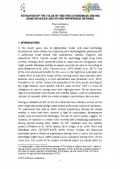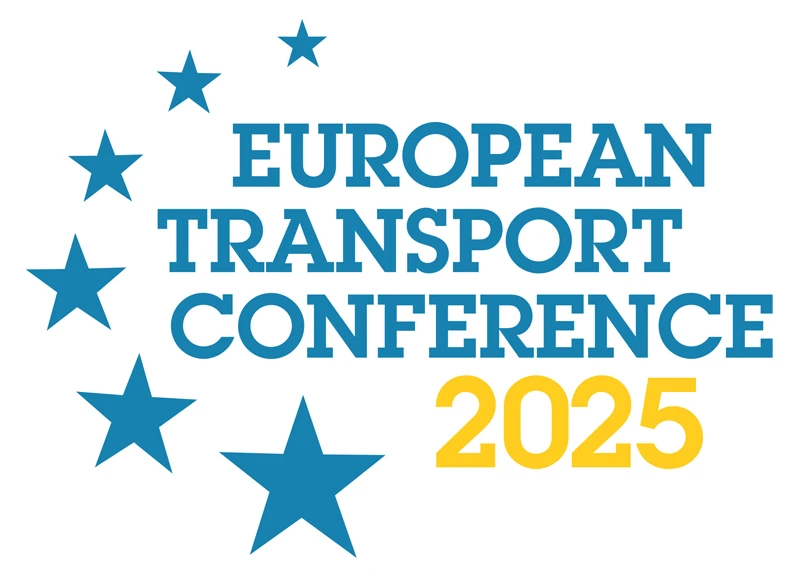-
Past ETC Papers

Browse, search and view papers from the past AET Conferences.
-
Members' Area

AET promotes networking and exchange of ideas, information and opportunities amongst members.
Conference Papers 2017
Barcelona, Spain
ETC Conference Papers 2017
Estimation of value of time for autonomous driving using revealed and stated preference method
Seminar
Day 3 (6 Oct 2017), Session 8, Value of Time and Perception, 11:30 - 13:30
Status
Accepted, documents submitted
Submitted by / Abstract owner
Viktoriya Kolarova
Authors
Viktoriya Kolarova, German Aerospace Center, Institute of Transport Research, Felix Steck, German Aerospace Center, Institute of Transport Research, Rita Cyganski, German Aerospace Center, Institute of Transport Research
Short abstract
The study introduced in the paper estimates value of time for autonomous driving and its impact on mobility, using a combination of RP and SP method. The paper introduces the results and discusses potential and challenges of VoT estimation using SP.
Abstract
Due to digitization trends and rapid technology development road vehicles are becoming more technologically advanced with a continuing trend toward fully autonomous vehicles. There are high expectations placed on the technology, such as more safety on the roads, less congestion, and providing individual mobility to people currently not able to drive. The most discussed advantage of the technology for the users is that autonomous driving will enable them to undertake other activities while traveling in a more comfortable way. Hence, the perception of the time spend travelling by car might be become more positive and the value of time in terms of willingness to pay for travel time saving might get lower. Experts expect that this might change mode choices preferences and travel behavior of vehicles users significantly in a way which is hard to predict at this point, but which becomes more relevant in light of urbanization, demographic trends, and environmental challenges. Previous studies found for instance an increase in vehicle miles travelled after introduction of autonomous vehicles caused among other factors by value of time reduction (Childress et.al, 2014, Trommer et.al, 2016).
The aim of the study introduced in this paper is to estimate the value of time changes for autonomous driving and to quantify its impact on travel behavior, using a combination of revealed and stated preferences survey method. We use a similar approach as proposed by Axhausen et al. (2014) in a German value of time survey and extended the study design in order to address the availability of new mobility options in the future. The revealed preference part of the survey was dedicated to current mobility patterns of the participants. The stated preferences part includes two choice-based conjoint experiments. The first conjoint experiment aimed to estimate the value of time and assess user´s preferences by mode choices under current conditions for a particular trip reported in the first part of the survey. The second one, which was integrated in the same questionnaire, examines user´s mode choice preferences in a situation where autonomous vehicles are an additionally available option for the same trip. This enabled us to estimate the potential change in the value of time more precisely by comparing the importance of different attributes for current and future choices.
The results of the study include estimation of value of time for different types of trips (commuting, leisure, shopping) as well as for two use cases of autonomous driving: a private owned autonomous vehicles and autonomous vehicles on demand. Within the paper we will introduce the first results of the survey but will also discuss the potential and the challenges by the estimation of the value of time for new mobility concepts using stated preference methods. Furthermore, we will present a brief outlook on how to integrate the results of the values of time into an existing microscopic transport demand model. Last but not least the paper will discuss the concept of value of time in general as well as in the context of autonomous driving.
Documents:

Association For
European Transport
Forester House
Doctors Lane
Henley-in-Arden
Warwickshire, UK
B95 5AW
+44 (0) 15 64 793552
VAT number: 710 1866 64
Conference Supporters & Endorsers




Legal Entity
The Association for European Transport is registered as an Association ('vereniging') with the Chamber of Commerce for Haaglanden in The Netherlands under company number 27170096.
Built on Zenario




